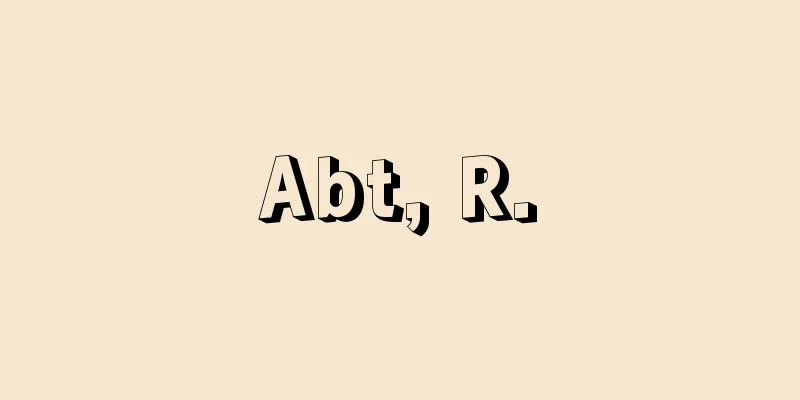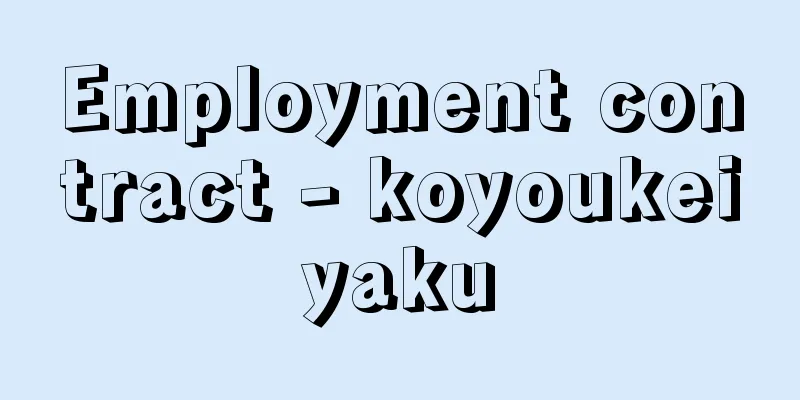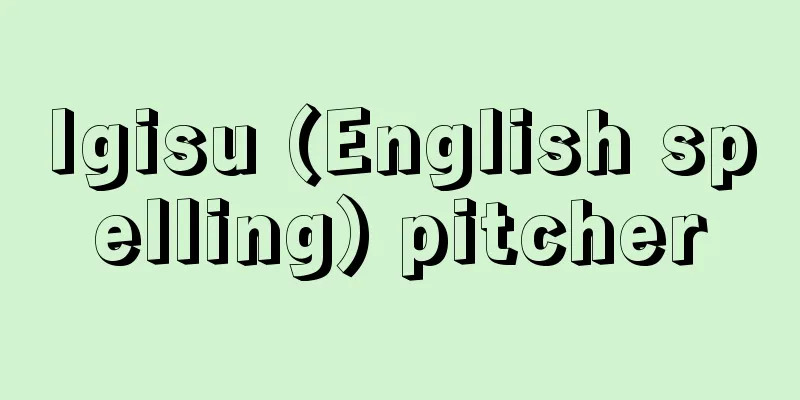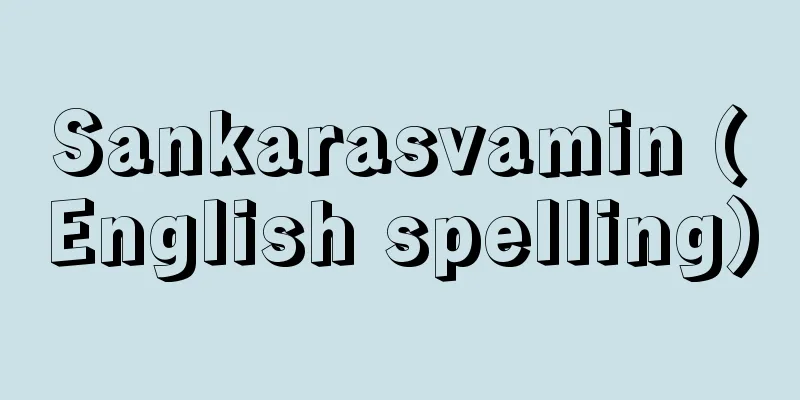Korean - Challenge

|
It is spoken mainly on the Korean Peninsula and its coastal islands, Jeju Island, and Ulleung Island, as well as in the southern part of northeastern China. The number of speakers is over 48.08 million in South Korea (Republic of Korea) (2004 estimate), 23.61 million in North Korea (2004 United Nations estimate), and in China there are 1.92 million Koreans in Jilin, Heilongjiang, and Liaoning provinces. As of October 2005, just under 600,000 Koreans live in Japan, and it is said that many of these second- and third-generation Koreans cannot speak their mother tongue. In any case, it is one of the world's most important languages, with over 70 million speakers. [Hiroyuki Umeda] Standard language and dialectsCurrently, the Korean Peninsula is politically divided into North and South, and the national language of each country, Korean, is called Hanggo (Korean language) in South Korea and Choseono (Korean language) in North Korea. Although there are many differences between the two languages as a result of the division since 1945, they are essentially the same language, so in this article we will refer to the language unique to this ethnic group as "Korean". The standard language is spoken in Seoul in South Korea and Pyongyang in North Korea. The dialects are broadly divided into six dialects: Northwest dialect (Pyeongan Province), Northeast dialect (north of Yeongheung, Hamgyong Province), Southwest dialect (Jeolla Province, Shuji Island), Southeast dialect (Gyeongsang Province), Central dialect (area surrounded by the dialects above), and Jeju Island dialect. [Hiroyuki Umeda] FeaturesThis paper describes the structural features of a standard language based on the language of Seoul. [Hiroyuki Umeda] phonemeThe syllable structure includes open and closed syllables, and syllable-final consonants do not form a mora. Because it has a closed syllable structure and allows polysyllabic word forms, word forms are considerably more complex than Japanese. However, there are only seven consonants that can be at the end of a syllable, there are considerable restrictions on consonant sequences within a word due to consonant assimilation, and there are also limited consonants that can be at the beginning of a word or particle, so there is a tendency to impose restrictions on the complexity of word forms, and the unique basic vocabulary is originally simple. There are also more types of individual phonemes that make up syllables than in Japanese. There are nine vowel phonemes, with front and non-front contrasts, and non-front rounded and non-rounded contrasts, and all of them are distinguished as closed (i, ɯ, u), non-closed and non-open (e, ə, o), and open (ε, a, ɔ). However, the younger generation does not have a non-front, non-rounded, non-closed non-open vowel (ə), and the distinction between a front non-closed non-open vowel (e) and an open vowel (ε) is unclear. There are two semivowels: j and w. A notable phenomenon regarding vowels is that a and ɔ, and o and u form pairs, respectively, and their alternation in sound symbolic words and color adjectives serves to indicate a certain kind of semantic differentiation. The first thing to note about consonant phonemes is that there are three contrasts between plosives and affricates, called flat sounds, aspirated sounds, and dense sounds, and there are also dense sounds in fricatives. Flat sounds are weakly voiceless aspirated at the beginning of a word, completely voiced sounds among voiced sounds, aspirated sounds are strong voiceless aspirated regardless of whether they are at the beginning or in the middle of a word, and dense sounds are almost completely voiceless aspirated regardless of whether they are at the beginning or in the middle of a word. The difference between these three types of sounds is also used to differentiate the meanings of sound symbolic words and other words. Other characteristics include the fact that the h becomes weak in the middle of a word, the r phoneme is pronounced as r at the beginning of a syllable (but never at the beginning of a word except in foreign words) and as l at the end of a syllable, ŋ never begins a word, m and n can be plosive at the beginning of a word, and there are only seven sounds pronounced at the end of a syllable: p, t, k, m, n, ŋ and l, all of which are implosive. [Hiroyuki Umeda] grammarThe grammatical framework is roughly the same as in Japanese, with a predicate at the center and one or more noun phrases that it governs, and the noun phrase is accompanied by various particles according to its relationship to the predicate in the sentence. A noun phrase may consist of a single noun, be preceded by the affiliative form of a demonstrative pronoun or personal pronoun, be preceded by another noun directly (affiliative relationship) or via a linking particle (parallel relationship), or the predicate of a sentence may take an attributive ending and be embedded before a noun as an attributive modifying clause. These noun phrases are joined by case particles to form main clauses and objective clauses, and stronger particles such as propositions and adjunctions may also be added. They may also become adverbial phrases by adding adverbial particles. Interestingly, there is a distinction between particles that correspond to ga and ha in Japanese, but usage differs in subtle ways, such as using a particle that corresponds to ga even in questions that contain interrogative words in the predicate. The demonstrative pronoun system is also parallel to Japanese in that it has various derived forms in three stages: i, kɯ, čɔ, just like Japanese's ko, so, a. However, usage differs from Japanese in that i indicates the speaker's domain, kɯ the listener's domain, and čɔ everything else, while only kɯ is used in contextual indications. The predicates that can be used include verbs, adjectives, existentials, and designatives, and although there are slight differences in the way the suffixes are used, their internal structure is basically the same; therefore, to put it collectively, their basic structure is formed by attaching affixes and suffixes to a stem, but there are also some that are followed by an auxiliary verb or an auxiliary verb compound (a compound form consisting of a formal noun and a certain type of predicate). Generally speaking, tense is indicated by affixes and suffixes, aspect by auxiliary verbs, and modality by suffixes and auxiliary verb collocations. Voice is indicated by affixes, but only on a very limited number of stems, so it is better to treat it as an internal derivative of the stem itself. Tense distinguishes between the present, past, and past perfect. The present differs from Japanese in that it indicates actions that are definitely taking place in the future as well as actions that are currently taking place, and there is a past perfect in addition to the past. What is interesting about aspect is that the expression form corresponding to "-teiru" distinguishes between the process of an action and the result of an action. As in Japanese, honorific language is used as a grammatical tool, with material honorifics indicated by affixes and addressee honorifics indicated by suffixes, but their usage is basically absolute honorific. In addition, there are two systems of addressee honorifics: a four-stage system based on status and a two-stage system based on closeness. [Hiroyuki Umeda] vocabularyThe vocabulary can be divided into native words, Chinese words, and foreign words other than Chinese, but the proportion of Chinese words is extremely large. In addition to classical Chinese vocabulary, Chinese words also incorporate slang, and some Japanese-made Chinese words that express modern concepts and Japanese written in kanji are read aloud and adopted in the form of Chinese words. Another characteristic is the abundance of phonetic symbols. [Hiroyuki Umeda] historyThe period is divided into the ancient language from the Silla era, which was the birthplace of Korean, the new central language formed in Kaesong with the change of power to Goryeo, which continues to this day, the medieval language spanning seven centuries from the 10th to 16th centuries (the early period being the Goryeo dynasty, and the late period spanning 200 years in the early Joseon Dynasty), the early modern language spanning three centuries from the beginning of the 17th century to the end of the 19th century, with the Japanese invasions of Japan during the Jinjin and Jeongyu eras (the Bunroku-Keicho Wars) as the dividing line, and the modern language. The period from the creation of the early Joseon Dynasty characters (Hunminjeongeum) (1443) to the Imjin War is sometimes called the middle language. There are very limited sources for the ancient language, such as the ancient folk songs of Silla, and for the early medieval language, such as the "Keirin Ruisi," but since the creation of characters, there have been a wealth of documents written in these newly created characters. Middle language had phonemes such as ɐ, z, and v that do not exist in modern language, and compound initial consonants such as sp-, st-, pt-, psk-, and pst-. There was also vowel harmony and phonological oppositions in accent that extended to word endings and particles. There are also many differences from modern language in grammar, such as a five-temporal system distinguishing between basic, stressed, present, future, and retrospective, and the existence of humble mood suffixes. The origins of the Korean language are still unclear. It is most often argued that it is related to Japanese and Altaic languages, and although this is highly probable, it has not been linguistically proven. [Hiroyuki Umeda] characterThe native alphabet is currently called Hangul in South Korea and Choseonggul in North Korea. In North Korea, only this alphabet is used and written horizontally. In South Korea, Chinese characters are also used and there is both vertical and horizontal writing, but the trend for ordinary people to use Hangul exclusively is for writing. Literary works such as novels have always been written only in Hangul. [Hiroyuki Umeda] "Standard Korean, edited by Lee Chongnyeong and compiled by Park Seongwon, 2 volumes (1972, 1974, Koryo Shorin)" ▽ "NHK Introduction to Hangul, by Umeda Hiroyuki (1985, Japan Broadcasting Publishing Association)" Source: Shogakukan Encyclopedia Nipponica About Encyclopedia Nipponica Information | Legend |
|
朝鮮半島とその沿岸の諸島および済州島、鬱陵(うつりょう)島を中心とし、さらに中国東北の南部などで話されている言語。話し手の数は、韓国(大韓民国)が4808万人余(2004推計)、北朝鮮が2361万人(2004国連推計)で、中国では吉林(きつりん/チーリン)、黒竜江(こくりゅうこう/ヘイロンチヤン)、遼寧(りょうねい/リヤオニン)の各省などに192万人の朝鮮族がいる。日本にも2005年(平成17)10月現在60万人弱が居住するが、これらのなかにはその母語を話せない二世、三世も多いといわれる。とにかく7000万人以上に及ぶ話し手をもつ世界でも有力な言語である。 [梅田博之] 標準語と方言現在、朝鮮半島は政治的に南北に分断され、それぞれの国語である朝鮮語も、韓国ではハングゴ(韓国語)、北朝鮮ではチョソノ(朝鮮語)と呼び方が異なる。この両者は1945年以来の分断の結果、異なる点が少なくないが、言語的には本来同一のものであるので、本項では「朝鮮語」という名称で、この民族固有の言語をさすこととする。標準語は韓国はソウル、北朝鮮はピョンヤン(平壌)のことばとしている。方言は大きく西北方言(平安道)、東北方言(咸鏡(かんきょう)道永興以北)、西南方言(全羅道、楸子(しゅうし)島)、東南方言(慶尚道)、中部方言(上の諸方言で囲まれた地域)、済州島方言の六つに分類される。 [梅田博之] 特徴ソウルのことばを基礎とする標準的な言語について、構造上の特徴を述べる。 [梅田博之] 音韻音節構造は開音節のほか閉音節もあり、音節末子音がモーラ(拍)をなさない。閉音節構造を有しかつ多音節語形を許すから、単語の形は日本語よりかなり複雑である。しかし、音節末にたちうる子音は七つに限られ、子音同化によって語中の子音連続にかなりの制限があり、語尾や助詞の頭位にたつ子音も限定されているなど、語形の複雑化に制約を課する傾向があり、かつ固有の基礎語彙はもともと単純な形をもっている。音節を構成する個々の音素も日本語より種類が多い。母音音素は九つで、前舌と非前舌、非前舌に円唇と非円唇の対立があり、そのすべてについて閉(i、ɯ、u)、非閉非開(e、ə、o)、開(ε、a、ɔ)の区別がある。ただし若い世代は、非前舌、非円唇、非閉非開母音(ə)を有せず、また前舌の非閉非開母音(e)と開母音(ε)の区別があいまいである。半母音はjとwの二つである。母音に関して注目すべき現象としてaとɔ、oとuがそれぞれ対をなし、音象徴語や色彩形容詞などでその交替がある種の語義の分化を示す機能を果たしている。子音音素に関してまず注目されるのは、破裂音、破擦音に平音・激音・濃音とよばれる三つの音の対立があり、摩擦音にも濃音があることである。平音は、語頭では弱い無声帯気音、有声音間では完全な有声音、激音は語頭・語中を問わず強い無声帯気音、濃音は語頭・語中を問わずほとんど完全な無声無気音である。この3種の音の違いも音象徴語などの語義の分化に利用される。その他の特徴としては、hが語中で弱まること、r音素が音節頭位ではr(ただし外来語を除き語頭にたたない)、音節末位でlで発音されること、ŋが語頭にたたないこと、m、nが語頭で破裂的になることがあること、音節末で発音される音はp、t、k、m、n、ŋ、lの七つだけで、いずれも内破音であることなどがある。 [梅田博之] 文法文法的枠組みは日本語とだいたい同じで、述語を中心にしてそれが支配する一つ以上の名詞句によって文が構成され、名詞句は文における述語との関係に従って種々の助詞を伴う。名詞句は、名詞一つの場合、指示代名詞や人称代名詞の所属形が前接する場合、別の名詞が直接(所属関係)または連結助詞を介して(並列関係)前接する場合、一つの文の述語が連体形語尾をとり連体修飾節として名詞の前に埋め込まれる場合などがある。これらの名詞句に格助詞がついて主節、目的節がつくられ、これに提題や付加などの強めの助詞もつきうる。また、副助詞がつくことによって副詞句となりうる。興味深いことは、日本語のガとハにあたる助詞の区別があるが、述部に疑問詞を含む質問文でもガにあたる助詞を使うなど、微細な点で用法が異なる。指示詞の体系も日本語のコ、ソ、アと同じくi、kɯ、čɔの三段階でいろいろな派生形をもつ点も並行的だが、iは話し手の領域、kɯは聞き手の領域、čɔはそれ以外を指示し、文脈指示ではkɯのみが用いられる点で日本語とは用法が異なる。 述部になりうるものに動詞、形容詞、存在詞、指定詞があるが、これらは語尾のとり方に若干の差異があるだけで、内部構造は基本的に共通であるので、一括して述べると、その基本的な構造は、語幹に接辞と語尾がついて成立するが、これにさらに補助動詞や助動詞連語(形式体言とある種の用言からなる連語形式)が続く構成のものもある。 概括的にいって、テンス(時制)は接辞と語尾(連体形)で、アスペクト(相)は補助動詞で、モダリティー(叙法)は語尾や助動詞連語によって示される。ボイス(態)は接辞によって示されるが、きわめて限られた語幹にしかつかないので、語幹自体の内部派生として扱ったほうがよい。テンスは「現在」と「過去」「大過去」を区別する。「現在」が、未来において確実に行われる行動のほかに、現に行われている行動をも表し、「過去」のほかに「大過去」がある点で日本語と異なる。アスペクトに関して興味深いことは、「~テイル」にあたる表現形式が、行動の過程と行動が行われた結果とを区別する点である。日本語と同様に文法手段として敬語があり、素材敬語は接辞で、対者敬語は語尾で示されるが、その用法は基本的に絶対敬語的である。また、対者敬語は身分規定に基づく四段階と親疎関係による二段階のシステムが共存している。 [梅田博之] 語彙語彙の構成は固有語、漢語、中国語以外の外来語に分類できるが、漢語の占める比重はきわめて大きい。漢語には中国古典語の語彙のほか、俗語も取り入れており、近代的諸概念を表す日本製漢語や漢字で書かれた日本語を音読し、漢語の形で取り入れたものもある。また音象徴語が豊富に存在することも特徴の一つである。 [梅田博之] 歴史時代区分は、朝鮮語の母胎となった新羅(しらぎ)の時代を古代語とし、高麗(こうらい)への政権交替とともに開城で新しい中央語が形成され、今日に至るが、10世紀から16世紀までの7世紀にわたる中世語(高麗朝を前期、李氏(りし)朝鮮初期の200年を後期とする)、壬辰(じんしん)・丁酉(ていゆう)の倭乱(わらん)(文禄・慶長の役)を境に17世紀初めから19世紀末までの3世紀間の近世語、そして現代語に分けられる。これとは別に、李氏朝鮮初期の文字(訓民正音)創製(1443)より壬辰倭乱までの時期を中期語とよぶこともある。古代語は新羅の古歌謡である郷歌など、前期中世語は「雞林(けいりん)類事」などきわめて限られた資料しかないが、文字創製以後は、この新製文字で書かれた豊富な文献がある。中期語には、現代語にはないɐ、z、vなどの音素があり、sp-,st-,pt-,psk-,pst-のような複頭子音があった。また、語尾や助詞にまで及ぶ母音調和やアクセントの音韻的対立があった。文法も、時称体系が、基本、強勢、現在、未来、回想の五つを区別し、謙譲法接辞が存在するなど、現代語と異なる点が少なくない。 朝鮮語の系統はまだ不明である。日本語やアルタイ諸語などとの親縁関係がもっとも多く論じられ、またその蓋然(がいぜん)性は高いが、言語学的には未証明である。 [梅田博之] 文字固有の文字は現在、韓国ではハングル、北朝鮮ではチョソンクルとよんでいる。北朝鮮ではこの文字のみを用いて横書きにする。韓国では漢字も混用し、縦書きも横書きもあるが、庶民の文字生活はハングル専用が趨勢(すうせい)である。もともと小説などの文学作品は以前よりハングルのみで書かれている。 [梅田博之] 『李崇寧監修、朴成媛編著『標準韓国語』全2巻(1972、74・高麗書林)』▽『梅田博之著『NHKハングル入門』(1985・日本放送出版協会)』 出典 小学館 日本大百科全書(ニッポニカ)日本大百科全書(ニッポニカ)について 情報 | 凡例 |
<<: Korean Language Society Incident
>>: Preparatory Committee for the Founding of Korea
Recommend
Hige Yagura - Hige Yagura
The title of a Kyogen piece. Female Kyogen. A man...
Bydgoszcz (English spelling)
Bromberg is the capital of the Kujawsko-Pomorskie ...
Sakazaki Bin
Year of death: February 17, 1913 Year of birth: No...
Songhua River - Songhua River
A large river that flows through the center of No...
Sopron - Sopron (English spelling) Sopron
A small city in the northwestern tip of Hungary, ...
Work Order - Gyomu Meirei
An order or instruction issued by an employer to ...
Isuzumi (English name) bluefish
A marine fish belonging to the order Perciformes ...
African marigold (English spelling)
...It is an annual or perennial plant of the Tage...
Waterwheel - Suisha
A prime mover that uses the flow of water to rota...
Kazuma Oda
Printmaker. Born in Tokyo. Learned Western painti...
Calcium Cyanamide
CaCN 2 (80.10). It is obtained by igniting calciu...
Diomedea irrorata (English spelling) Diomedeairrorata
…[Hiroshi Aramata]. … *Some of the terminology th...
Ukusu - Ugusu
…It is located in the center of the west coast of...
Trencher - Trencher (English spelling)
A general term for machines used in agriculture a...
Cyanamide - Shianamido (English spelling) cyanamide
It is an amide of cyanide, also known as cyanamid...









